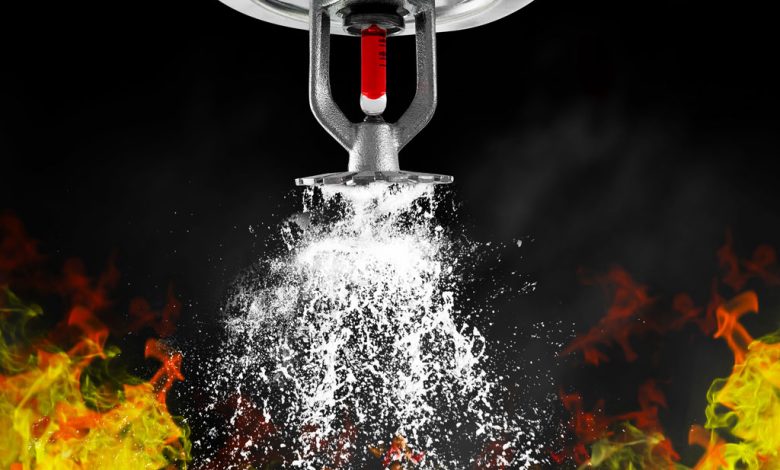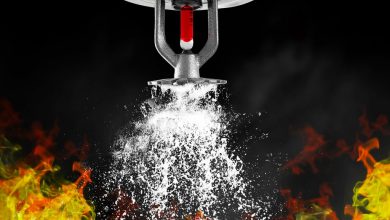Fire Hydrant Cabinets vs. Fire Extinguishers: Which is Better for Your Safety Needs?
fire hydrant cabinet

When it comes to fire safety, having the right tools in place can make the difference between a contained emergency and a devastating loss. Among the most commonly used fire-fighting tools are fire extinguishers and fire hydrant cabinet. While both serve the purpose of controlling and extinguishing fires, their functions, capacities, and suitable applications vary significantly. At Sri Triveni Crafts, we specialize in high-quality fire safety equipment, including fire hydrant systems that ensure maximum protection in emergencies.
Understanding the differences between these two essential tools will help you choose the right solution for your building’s safety requirements.
Understanding the Basics
What is a Fire Hydrant Cabinet?
A fire hydrant cabinet is a protective enclosure that stores firefighting equipment such as hoses, nozzles, and valves. These cabinets are usually connected to a pressurized water source and are designed for use in larger or more complex fire situations. The system often requires trained personnel to operate effectively and is typically installed in commercial buildings, industrial areas, and high-rise structures.
What is a Fire Extinguisher?
A fire extinguisher is a portable device used to put out small fires in their early stages. It is filled with different extinguishing agents like water, foam, CO₂, or dry chemicals, depending on the type of fire it is designed to combat. Fire extinguishers are easy to use and are often the first line of defense in smaller residential or office environments.
Key Differences Between Fire Hydrant Cabinets and Fire Extinguishers
1. Application Area
-
Fire Hydrant Cabinets are more suitable for large-scale fire threats or where the risk is higher, such as factories, malls, or multi-storey buildings.
-
Fire Extinguishers are ideal for small, localized fires in homes, offices, or vehicles.
2. Operation
-
A fire hydrant system typically needs a trained operator and may require two people to manage the hose and valve.
-
Fire extinguishers can be used by anyone with basic training and are designed for quick, solo operation.
3. Water Supply
-
Hydrant cabinets are connected to a continuous water source or pump system, providing a steady and powerful stream.
-
Extinguishers contain a limited amount of extinguishing agent and are meant for temporary use.
4. Response Capability
-
Fire hydrant systems can handle larger, more intense fires thanks to their unlimited water supply and stronger discharge pressure.
-
Fire extinguishers are best for early-stage fires; they are not designed for large-scale suppression.
Choosing the Right Option
When deciding between a fire hydrant cabinet and a fire extinguisher, consider the following factors:
Building Size and Layout
Larger buildings or complexes with high occupancy should install hydrant cabinets at regular intervals for comprehensive coverage. Smaller offices or single-floor units may only need strategically placed fire extinguishers.
Fire Risk Level
If your facility handles flammable chemicals, machinery, or high-heat processes, a fire hydrant system offers stronger protection. For low-risk areas like administrative offices, fire extinguishers are often sufficient.
Compliance with Fire Safety Regulations
Depending on your region and building type, fire codes may mandate the installation of hydrant cabinets in addition to extinguishers. Always consult with fire safety authorities or a certified fire protection expert like Sri Triveni Crafts.
Benefits of Each System
Fire Hydrant Cabinet
-
High water output for major fire incidents
-
Durable and secure housing for equipment
-
Permanent installation with continuous access to water
-
Complies with commercial fire safety standards
Fire Extinguisher
-
Portable and easy to use
-
Effective for small, contained fires
-
No installation required
-
Suitable for immediate, individual response
Integrated Approach: Why Not Both?
In many cases, the best solution is a combination of both systems. Fire extinguishers provide a quick response during the initial moments of a fire, while fire hydrant cabinets offer a more powerful and sustained defense if the fire escalates.
At Sri Triveni Crafts, we help our clients implement balanced fire protection plans that include both fire hydrant systems and extinguishers tailored to the building’s size, purpose, and fire risk level.
Conclusion
When comparing fire extinguishers and fire hydrant cabinets, it’s not about choosing one over the other—it’s about understanding their strengths and deploying them strategically. Fire extinguishers are ideal for immediate, smaller fires, while hydrant cabinets offer robust support for larger emergencies. Both are essential tools in a comprehensive fire safety strategy.
If you’re planning a fire safety upgrade or a new installation, Sri Triveni Crafts offers end-to-end solutions tailored to your specific needs. Visit our website to learn more about how a fire hydrant cabinet can be the backbone of your fire protection system: Sri Triveni Crafts – Fire Hydrant System.
Frequently Asked Questions (FAQs)
1. Can I use a fire hydrant cabinet instead of a fire extinguisher?
While a fire hydrant system is more powerful, it’s not always suitable for every setting. Fire extinguishers are better for quick action in small-scale fires, especially in homes and offices.
2. Who should operate a fire hydrant system?
Fire hydrant systems should be handled by trained personnel due to the pressure involved and the technique required to control the hose effectively.
3. Do buildings need both hydrant cabinets and fire extinguishers?
Yes, in many commercial and industrial spaces, both systems are required by law to ensure layered fire protection.
4. Are hydrant cabinets weatherproof?
Yes, when built using weather-resistant materials like stainless steel or FRP, they are suitable for both indoor and outdoor installations.
5. What maintenance is required for hydrant cabinets?
Regular inspections, testing the water supply, checking hose integrity, and ensuring the cabinet is unobstructed are all part of routine maintenance.
